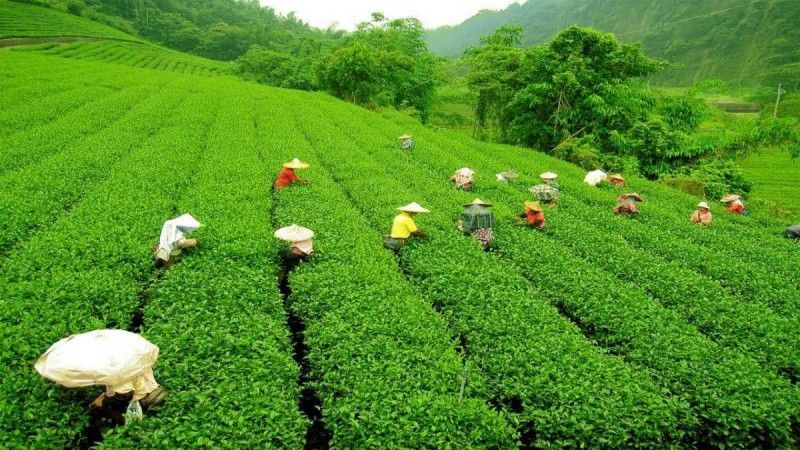
POPULAR PLACES TO VISIT NEAR ASSAM
Assam is a state in northeastern India known for its wildlife, archeological sites, and tea plantations. in the west, Guwahati, Assam’s largest city, features silk bazaars and the hilltop Kamakhya temple. Amanda temple sits on peacock island in the Brahmaputra River. The state capital, Dispur, is a suburb of Guwahati. the ancient pilgrimage site of Hajo and madan kamdev, the ruins of a temple complex, lie nearby. The Asvakranta temple is one of the most important shrines of lord Vishnu. The deity worshiped here is called anantasayin vishnu which refers to the sitting position of the lord Vishnu on the serpent. The temple is located on north of Guwahati, Assam on a rocky bed near the Brahmaputra River.
Assam has maintained a rich tradition of various traditional crafts for more than two thousand years. Presently, cane and bamboo craft, bell metal and brass craft, silk and cotton weaving, toy and mask making, pottery and terracotta work, wood craft, jewelry making, musical instruments making, etc. Popular places to visit near Assam are Kaziranga National Park, Manas National Park, Kamakhya Temple, Majuli Island, Hoollongapar Gibbon Wildlife Sanctuary, Guwahati Planetarium, and Haflong Lake.
Kaziranga National Park:- Indian one-horned rhinoceros only existed in the Jurassic era, then a trip to Kaziranga is a must for them. One of the most sought-after wildlife holiday destinations in India, Kaziranga national park’s 430 square kilometer area sprinkled with elephant-grass meadows, swampy lagoons, and dense forests is home to more than 2200 Indian one-horned rhinoceros, approximately 2/3rd of their total world population. Formed in 1908 on the recommendation of mary curzon, the park is located on the edge of the eastern Himalayan biodiversity hotspots – golaghat and Nagaon districts. In the year 1985, the park was declared a world heritage site by UNESCO.
it is said when mary curzon, the wife of the Viceroy of India – Lord Curzon of Kedleston, visited the park to see Indian one-horned rhinoceros; she wasn’t able to find even one. Then she persuaded her husband to take urgent measures to protect the dwindling species which he did by initiating planning for their protection.
Manas National Park:- On a gentle slope in the foothills of the Himalayas, where wooded hills give way to alluvial grasslands and tropical forests. The Manas sanctuary is home to a great variety of wildlife, including many endangered species, such as the tiger, pygmy hog, Indian rhinoceros, and Indian elephant. The beautiful park earlier known as north kamrup wildlife sanctuary is spread over an area of 519.77 sq km and was declared a sanctuary on December 01, 1928. it was established as the core of the manas tiger reserve in April 1973 and elevated to the position of a national park status on September 7, 1990.
Kamakhya Temple:- According to the Kalika Purana, kamakhya temple denotes the spot where Sati used to retire in secret to satisfy her amour with Shiva, and it was also the place where her yoni (genitals, womb) fell after shiva tandava (dance of destruction) with the corpse of Sati. Unlike most other shrines, maa kamakhya temple has no idol. instead, the object of worship is the yoni or the vulva of goddess Sati. It is located in the temple's sanctum sanctorum and collects water from an underground spring.
unlike most other shrines, maa kamakhya temple has no idol. instead, the object of worship is the yoni or the vulva of goddess Sati. It is located in the temple's sanctum sanctorum and collects water from an underground spring. kamakhya devi is also famous as the bleeding goddess. The legendary womb and yoni of the goddess are supposedly installed in the compound of the temple. it is believed that in June, the goddess bleeds or menstruates. The turning red of river Brahmaputra river near Kamakhya is associated with this belief.
Majuli Island, Hoollongapar:- The hollongapar gibbon sanctuary is located in the civil district of Jorhat in Assam, India. hoollongapar gibbon sanctuary, (earlier known as the gibbon wildlife sanctuary or hollongapar reserve forest), is a protected region, famous for being home to the country's only ape species and only nocturnal primate (of northeastern India) called the Bengal slow loris.
Hosting one of India's most precious and unique ecosystems, the nokrek national park is part of the nokrek biosphere reserve and a natural treasure of Meghalaya. It is known for its endangered hoolock gibbon population and also for being home to one of the earliest citrus species on the planet.
Gibbon Wildlife Sanctuary:- Hoollongapar gibbon sanctuary, (earlier known as the gibbon wildlife sanctuary or hollongapar reserve forest), is a protected region, famous for being home to the country's only ape species and only nocturnal primate (of northeastern India) called the Bengal slow loris.
The hollongapar gibbon sanctuary is located in the civil district of Jorhat in Assam, India. sanctuary are Indian elephants, tigers, leopards, jungle cats, wild boar, three types of civets, four types of squirrels, and several other types of mammals. At least 219 species of bird and several types of snake are known to live in the park.
Guwahati Planetarium:- The Guwahati Planetarium is a center for astronomical education and research. built-in 1994, it is the only planetarium in Assam and the north-eastern region of India. Its distinctive dome and sloping walls set it apart from the skyline of the area. It started in 1994, on 17 August, Guwahati planetarium is one of its kind center of astronomical research in Assam and the entire northeastern region of India.
Assam’s First Underwater Tunnel Connecting North And South Of The Brahmaputra RiverBarpeta's Flood Woes Cast a Shadow over Eid CelebrationsAssam Flood Update: 2 Dead, 488K Affected; Rescue Operation Details